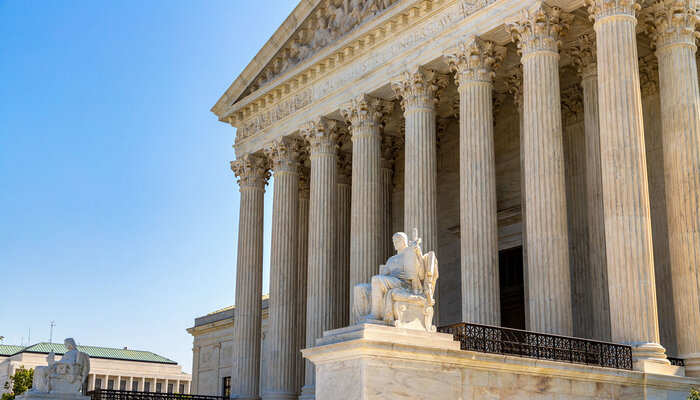Justice Stephen Breyer announced his retirement on January 27. Soon after, President Biden reiterated his commitment to nominate the first Black woman to ever serve on the Supreme Court. This would be a milestone for the judiciary — and for the nation. Ample evidence demonstrates why building a diverse bench is a crucial value in choosing judges.
First, a diverse judiciary helps instill trust in the justice system among underrepresented communities. As federal district court Judge Edward Chen observed, “It is the business of the courts, after all, to dispense justice fairly and administer the laws equally. . . . How can the public have confidence and trust in such an institution if it is segregated — if the communities it is supposed to protect are excluded from its ranks?” One study found, for example, that greater representation of Black judges on the bench led to heightened perceptions among Black Americans that the courts were legitimate.
A bench that reflects a broad range of life experiences and personal and professional backgrounds also promotes a richer jurisprudence. This is borne out in judges’ own reflections. Judge Harry T. Edwards of the DC Circuit Court of Appeals has observed that diversity on the bench “provides for constant input from judges who have seen different kinds of problems in their pre-judicial careers, and have sometimes seen the same problems from different angles.” Federal district court Judge Carlton W. Reeves has noted, “Where people come from, what they have lived through, what they do with the time they have, and who they spent that time with — it all matters.”
Justice Sandra Day O’Connor has recounted how she learned from Justice Thurgood Marshall, the first Black justice and a legendary civil rights lawyer. “Occasionally, at Conference meetings, I still catch myself looking expectantly for his raised brow and his twinkling eye, hoping to hear, just once more, another story that would, by and by, perhaps change the way I see the world.”
Research similarly has shown that “judges from different backgrounds often do rule differently from one another” on certain issues, as political scientist Maya Sen described last year in testimony to the Senate Judiciary Committee. One recent study, for example, found that white federal district court judges placed more conditions on pre-trial release than Black judges.
Another recent study found that former corporate lawyers and prosecutors, who make up 70 percent of active federal judges, were more likely to rule against alleged victims in employment discrimination suits. Outside of formal court rulings, research has documented that female judges are more likely to identify incidents of gender bias in the courtroom and intervene. Together, this research suggests that, not surprisingly, life experience shapes how judges see the law.
Diversity of life experience and perspectives also enriches deliberations among judges. For example, studies of three-judge appellate panels found that when a female judge or a person of color sits on a panel, their male or white colleagues were more likely to side with plaintiffs in civil rights cases.
To be sure, none of this research suggests that a judge’s background is determinative in how they decide cases. And diversity is not a guarantee that courts will reach fair outcomes. But the answers to difficult legal questions, especially those that reach the Supreme Court, demand good judgment — and that is necessarily informed by life experience. Chief Justice John Roberts famously said that his job as a jurist is just “to call balls and strikes,” dispassionately applying the law to the facts before him. In contrast, during her confirmation process, Justice Sonia Sotomayor’s detractors attacked her for having once said that “personal experiences affect the facts that judges choose to see.” The research sides with Sotomayor.
Finally, representation in our seats of power also establishes role models and combats stereotypes. Studies of politics and elections have found that representation fosters increased political engagement among young people.
A woman didn’t reach the Supreme Court bench until 1981. The first woman of color only took her seat in 2009. There have only been two Black justices in the Court’s history. The sooner this record improves, the better.
Ensuring demographic and experiential diversity on the bench is not just an appropriate component of judicial selection, it is necessary. As the research makes clear, a bench that fails to reflect the public it serves is ill-equipped to serve that public.





